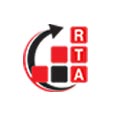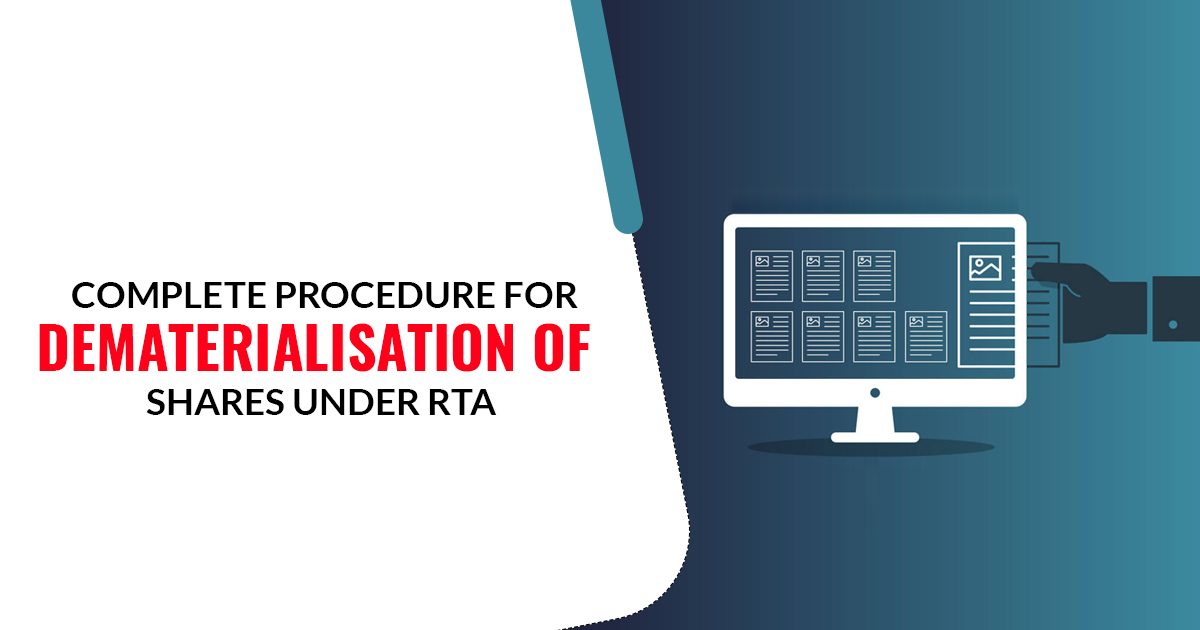Dematerialisation of shares
Dematerialisation is the process of getting the physical certificates of shares converted in an electronic form of book-keeping. These physical certificates are maintained in an account, known as the Demat Account.
The Depository Participant (DP) is the Agent who is the mediator between the Company and the Actual Depository. So basically, Dematerialisation is the shift from Actual stock certificates to electronic recording.
What should be done by a Company to get its shares Dematerialized?
- The amendment should be done in the ‘Articles of Association’. A special resolution is required to be passed in the general meeting of the company which would thereby result in letting the company issue shares in dematerialized form.
- The Private Companies are required to get registered with both of the Central depositories, viz, the National Securities Depository Limited (NSDL) and Central Securities Depository Limited (CDSL). Again, the Company getting Registered with these Central Depositories is required to be fulfilling all the criterions which have been framed bases the terms of registration with these Depositories.
- If the Company meets all the criterions and agrees to all the terms and gets registered with these depositories, then the depositories would provide an International Securities Identification Number (ISIN) to the Company for each of its shares.
- “ISIN” is a unique identification 12 digit alphanumeric code attached to a security, shares, Debentures, Bonds etc and is offered to the security when it is admitted in the depository system. The first two digits of the ISIN code indicates the ‘country of registration’ for that security. For example, All the securities registered on depository in India will be having ‘IN’ as the first two digits of the ISIN code.
- If a Private Company wishes to get its dematerialized shares transferred, the Company is ought to arrange
demat connectivity from depositories like NSDL or CDSL and also with a Registrar & Transfer Agent (RTA). The Demat connectivity could be done by entering into a tripartite agreement between the company, the depositories and the transfer agent. - An RTA (Registrar and Transfer Agent) is the Issuer’s agent. It acts as an intermediary between the issuer and the depository for facilitating the services like Dematerialisation, Rematerialisation, Initial Public Offers, and Corporate Actions.
There are some procedures framed by depositories like NSDL and CDSL which are required to be followed by the Company who wishes to get its physical shares Dematerialized.
Read Also: Process To Remate The Security Holding Under RTA Services
Below are the general steps involved in the process:
- Step1: Beneficiary Owner (BO) will have to open a
demat account with a Depository Participant (DP) and thereby obtain an account number. - Step 2: Beneficiary Owner is required to fill in a Demat Request Form (DRF) and submit the same with the physical certificate/s to the depository participants for dematerialization. It should be noted that for each ISIN, a separate DRF has to be used. If the Beneficiary Owner (BO) has free as well as lock-in shares against the same ISIN, then in such a condition separate
demat request has to be set up for free shares and lock-in shares. - Step3: Depository participant (DP) would be the person verifying the correctness of the DRF filled.
- Step 4: DP would then raise a
demat request on the CDSL or NSDL system and is supposed to send the same to the Company and the Registrar and Transfer Agent. - Step 5: Issuer/ Registrar and Transfer Agent (RTA) would be verifying the genuineness of the certificates and hence confirms the request.
- Step 6: Once the request has been successfully made and confirmed, the DP would destroy the physical certificates and would generate a Demat Request Number (DRN). After this, electronic communication is sent to the depository and the DRF and the Share certificate would be sent to the company by courier.
- Step 7: After receiving the confirmation, the depository is supposed to credit an equivalent number of securities in the
demat account of the Beneficiary owner (BO) which is maintained with CDSL or NSDL. - Step 8: The depository now gets the details of the
demat request electronically download and communicate the same to the electronic registry as maintained by the Registrar of the relevant Company.
Transfer of shares by an individual in dematerialized form
- A shareholder who wants to get his shares dematerialise, needs to open a demat account with Depository Participant (DP), and then surrender his physical shares.
- If a shareholder wishes to get his shares transferred to the demat account of another shareholder, he can do this through Delivery Instruction Slip (DIS) in which he can furnish appropriate instructions to the concerned depository. This Delivery Instruction Slip (DIS) is issued by the DP. DIS is like an investor’s cheque book and hence required to be carried with care.
- If the investor makes a different choice and wishes to transfer his securities through the stock exchange, then he/she needs to instruct the DP to get the shares transferred from his/her demat account to the brokers’ pool account.
- If the Investor wishes for an off-market transaction, i.e. he wishes to transfer his shares to any other buyer`s demand account, he needs to instruct the DP to make this transfer happen by transferring the shares to the buyer’s demat account.
- Just like this, the securities could be made to be transferred to the buyer’s demat account as per the instruction of the transferor(seller) to the concerned DP. The Demat account number is supposed to be mentioned in the DIS
- The important point to note is that Registrar and Share Transfer Agent needs to confirm from the company before making any approval to the transfer. The Company approval is important and mandatory so that RTA could register a transfer in the demat mode after the approval.
Note, that Registrar & Share Transfer Agent plays a important role in the complete procedure of share transfer as well as documentation on behalf of the investor and mutual fund houses. They carry all the background documentation in check for actively supporting the fund house and investors data requirements from time to time.









